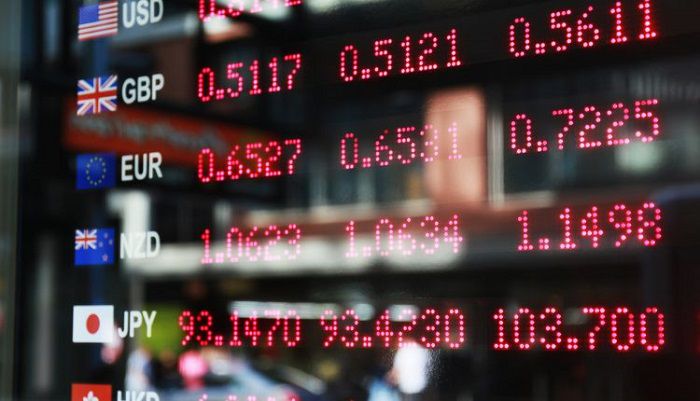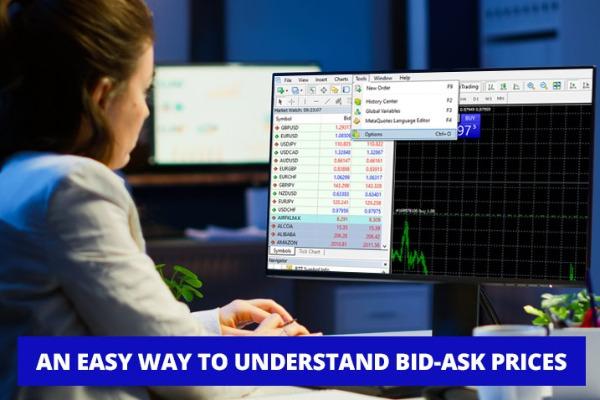Calculating trading risks is not all about potential losses but also how much spread you will incur in a trade. Here is the basic guide to counting your spreads for each trade.

There are usually no commissions in forex trading, but there is a cost called the spread. The spread is the difference between a currency pair's buying price (ask) and the selling price (bid). Forex brokers, who facilitate leveraged trading, include the spread in the cost of each trade.
The spread can be narrow or wide, depending on factors like the currency pair, broker, and market volatility. A wider spread means that traders have to pay more to open trades, which can reduce their profits. Traders need to understand spreads because they are the main expenses in currency trading.
This article will explain how spread impact on a trader's profits.
Spread Can Reduce Your Profit
Spreads can range from narrow to wide. A narrow spread will have a knock-on effect by increasing the trader's propensity for a higher profit margin. On the other hand, a wider spread means a very large difference between the ask and bid price due to the market having low liquidity and high volatility. This is bound to impact the profit margin of a trader negatively since any trade initiated will be quite costly due to the wider spread.
For example, if a trader makes a profit of 10 pips on a trade with a spread of 5 pips, their profit will be five pips after the spread is considered. However, if a trader makes a profit of 10 pips on a trade with a spread of 1 pip, their profit will be nine pips after the spread is considered.
Spread Can Affect Traders' Profits Differently
Some traders are more affected by spreads than others. For example, spread affects scalpers who take small profits on frequent trades more than trend followers who open fewer trades.
The spread can also affect the overall profitability of a trading strategy. This is because the spread calculation is applied to each new position opened. In other words, the more positions opened, the larger the spread cost incurred.
For example, if a scalper executes 100 trades with a 2 pip spread, the total cost of the spread would be 200 pips. If each trade had a profit of 5 pips, the total profit would be 500 pips. However, after factoring in the spread cost, the actual profit would be just 300 pips.
Now, imagine if the same spread is applied to a non-scalper who only execute 10 trades within the same periode of time. Due to their higher profit target, the return for each trade was around 10 pips. As such, their accumulated spread would be 20 pips while their profits amount to 100 pips. The net profit then would be 100 pips - 20 pips = 80 pips.
The non-scalper would make smaller profits than the scalper do, but their profit reduction due to the spread is much fewer. The scalper loses 200 pips while the non-scalper only loses 20 pips.
It's also important to note that some traders are more risk-averse than others. Risk-averse traders may be more willing to accept wider spreads to trade with a broker they trust or offer other features they value.
Spread Effect on Profits Depends on the Pairs Too
The ideal way for traders to be profitable in the forex market is gradually and steadily, possibly through tighter spreads seen in major forex pairs. On the other hand, emerging currency pairs with wider spreads make it difficult for traders to make steady profits. As such, understanding the spread in a particular market for a forex pair is important for traders to gauge their possibility of making significant profits.
The following are some of the differences in spreads on major and cross pairs:
- Major currency pairs are the most liquid forex pairs, meaning many buyers and sellers are in the market. This makes major currency pairs the most profitable since they generally have the lowest spreads among other pairs.
- Cross-currency pairs are less liquid than major currency pairs, leading them to be charged with higher spreads. The profit margin for cross-pair trading may be smaller due to this characteristic.
The following is an example of the difference in spread between major and cross pairs that exist at the IC Markets broker:
Major Pair
Cross Pair
Please see the example below to compare the profits you get when trading on major and cross pairs.
Vicky opened 10 positions on EUR/USD with a spread of 0.6 pips, resulting in a total cost of 6 pips to cover the spread. Each time she opened a position, she targeted a profit of 10 pips. Therefore, the total profit obtained after the spread was 94 pips (100 - 6 pips).
On the other hand, Timmy opened 10 positions on AUD/CAD with a spread of 1.68 pips, resulting in a total cost of 16.8 pips to cover the spread. Similar to Vicky, he targeted a profit of 10 pips per position. Therefore, the total profit minus spread that Timmy got would be 83.2 pips (100 - 16.8 pips).
As you can see, even though they had the same number of trades and profit targets, the choice of currency pair can influence the eventual gain because of the spread differences. Vicky, who traded on a major pair, gained more pips. On the other hand, Timmy earned smaller profits due to higher spreads charged in AUD/CAD which is a cross pair.
Forex spreads have been developed into some variations, two of which are fixed spreads and floating spreads. What are the fundamental differences between the two, and which is better for you? Find out in "Fixed Spread Vs. Floating Spread: 5 Things You Should Know".

 Dedicated FREE FOREX VPS
Dedicated FREE FOREX VPS Free FOREX Virtual Private Server
Free FOREX Virtual Private Server MT4 Demo Contest, Get $500
MT4 Demo Contest, Get $500 Sign Up for an Account, Claim 60% Deposit Bonus
Sign Up for an Account, Claim 60% Deposit Bonus Free MT4/MT5 VPS 2024
Free MT4/MT5 VPS 2024 Send E-mail and Get Free Merchandise
Send E-mail and Get Free Merchandise $1K Refer a Friend Bonus for Pepperstone Pro clients
$1K Refer a Friend Bonus for Pepperstone Pro clients Maximize Your Earnings with 100% Deposit bonus
Maximize Your Earnings with 100% Deposit bonus Trade to Win, $5,000 Monthly Demo Contest
Trade to Win, $5,000 Monthly Demo Contest Claim 30% + 15% Deposit Bonus from LiteFinance
Claim 30% + 15% Deposit Bonus from LiteFinance











